How to Make Mascarpone
This post may contain affiliate links. See my disclosure policy.
If you’ve never attempted homemade mascarpone cheese before you’re in for a real treat! Look no further for a foolproof mascarpone recipe! Learn how to make mascarpone that’s luxuriously thick, rich and creamy. It’s super easy, costs less than store-bought, and the results will wow you!
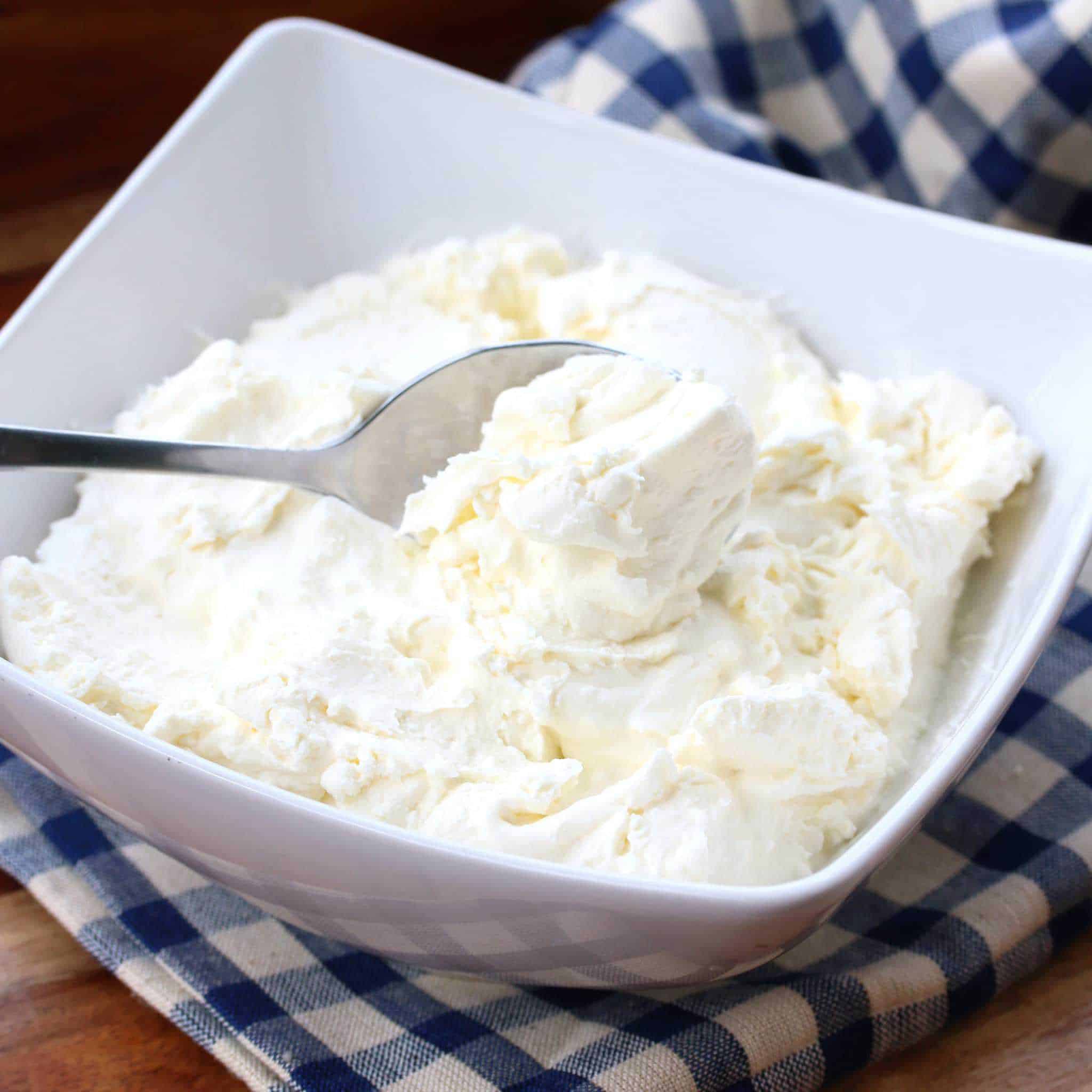
This foolproof homemade mascarpone recipe is so easy to make and costs less than the store-bought stuff! I used to wince every time I had to pay the exorbitant price associated with a small tub of mascarpone at the store. Those days of wincing over the price of mascarpone are gone! Making it yourself is not only super easy and quick but will save you money!
What Is Mascarpone?
Mascarpone cheese is a double or triple cream cheese that is made by heating cream over gentle, steady heat and then adding acid to thicken it. The mixture is then left to drain in cheesecloth for a few hours where the whey will separate from the solids resulting in a thick, spreadable cream cheese.
Mascarpone originated in the Lombardy region of northern Italy and is believed to date back to the Renaissance. It’s used in both sweet and savory dishes. It’s best known for its use in making Italy’s famous dessert, tiramisu.
Mascarpone vs. Cream Cheese
The taste, texture and fat content are different. Mascarpone has at least double the fat as American cream cheese (e.g., Philadelphia) giving it a much richer, thicker and melt-in-your-mouth texture than standard cream cheese. While cream cheese has a tangy flavor, mascarpone is much milder and isn’t tangy at all. Cream cheese is firmer and more “rubbery” in texture while mascarpone is softer and much creamier. Though you can use the two interchangeably the flavor and texture will be different. A closer relative to mascarpone is the French crème fraîche or English clotted cream.
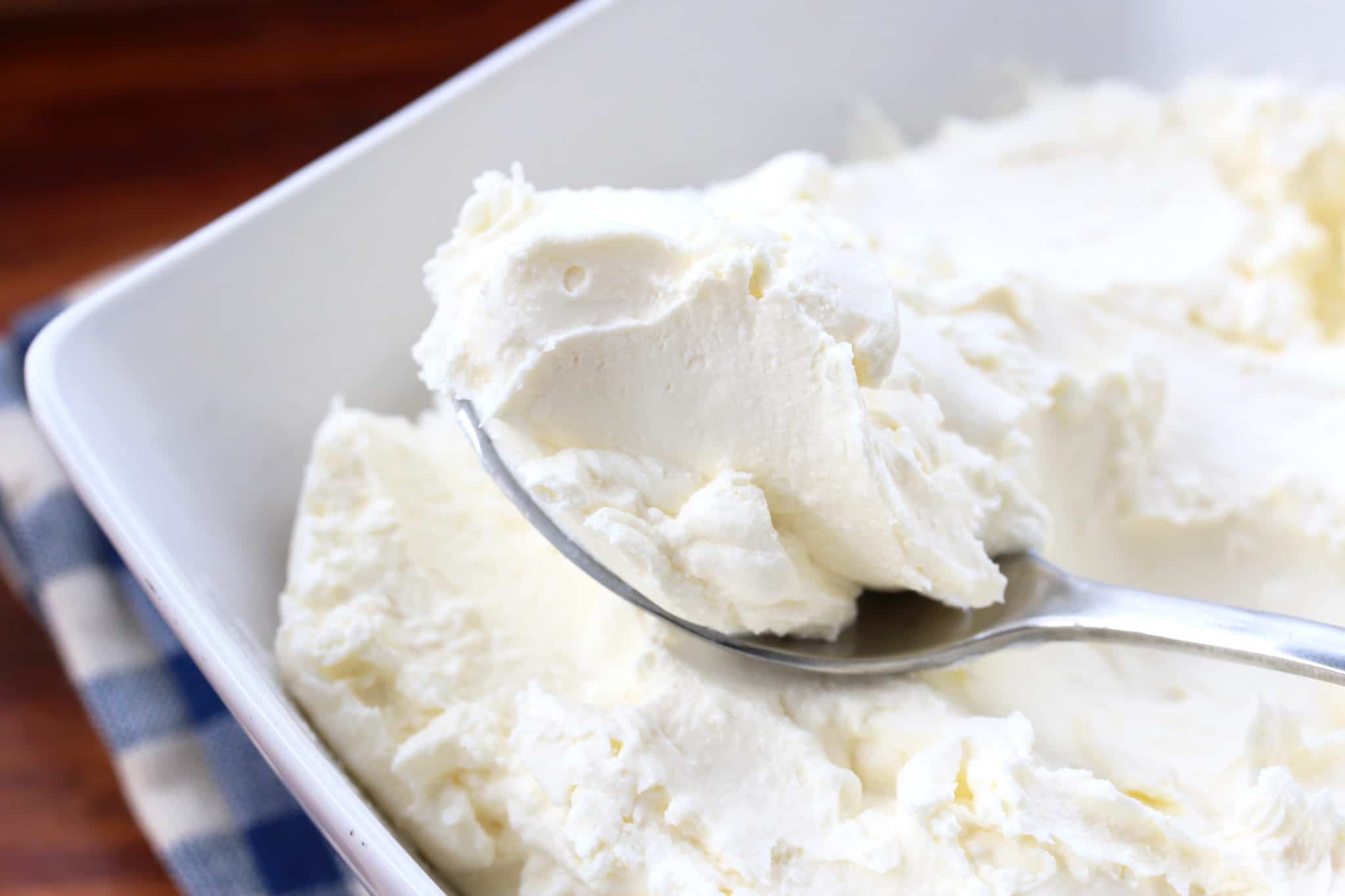
Ways to Use Mascarpone
Mascarpone is as versatile as whipped cream and so the possibilities are endless. Here are some delicious ways to use it:
- Tiramisu
- Mixed with berries and a little honey for a healthy dessert
- Serve a dollop of it with roasted fruits like peaches and figs
- To make parfaits or trifles
- To make semifreddo
- Spread on toast or bagels with a drizzle of honey
- As a frosting for cake, topping for waffles, or a filling for crepes
- Substitute it for sour cream in cakes and muffins or as a substitute for whipped cream
- Use it in place of cream cheese or ricotta to make cheesecake (e.g. German Cheesecake)
- Make mascarpone cream cheese frosting for your carrot cake (or gluten free carrot cake)
- Add it to risotto and mashed potatoes for an extra creamy texture
- To make a savory herb dip for veggies or a sweet dip for fruits
- Use it as the white sauce for your pizza
- As the base in your creamy sauces (e.g. Fettuccine Alfredo)
- Add some to your zucchini au gratin or au gratin potatoes
- Add some to your scrambled eggs or to your Southern grits to make them extra creamy
How Long Does Mascarpone Keep?
Mascarpone should be stored in the refrigerator and will keep for 3-5 days. If it develops any mold or a strange odor toss it out.
Can You Freeze Mascarpone?
Mascarpone is not the best candidate for freezing because as with most soft cheeses it has the tendency to separate when thawed. However once it’s thawed you can try to whip it back into shape again. If that doesn’t work you can still use the mascarpone for cooking. You can freeze it in heavy duty freezer bags for about 2 months and then thaw it very slowly in the refrigerator.
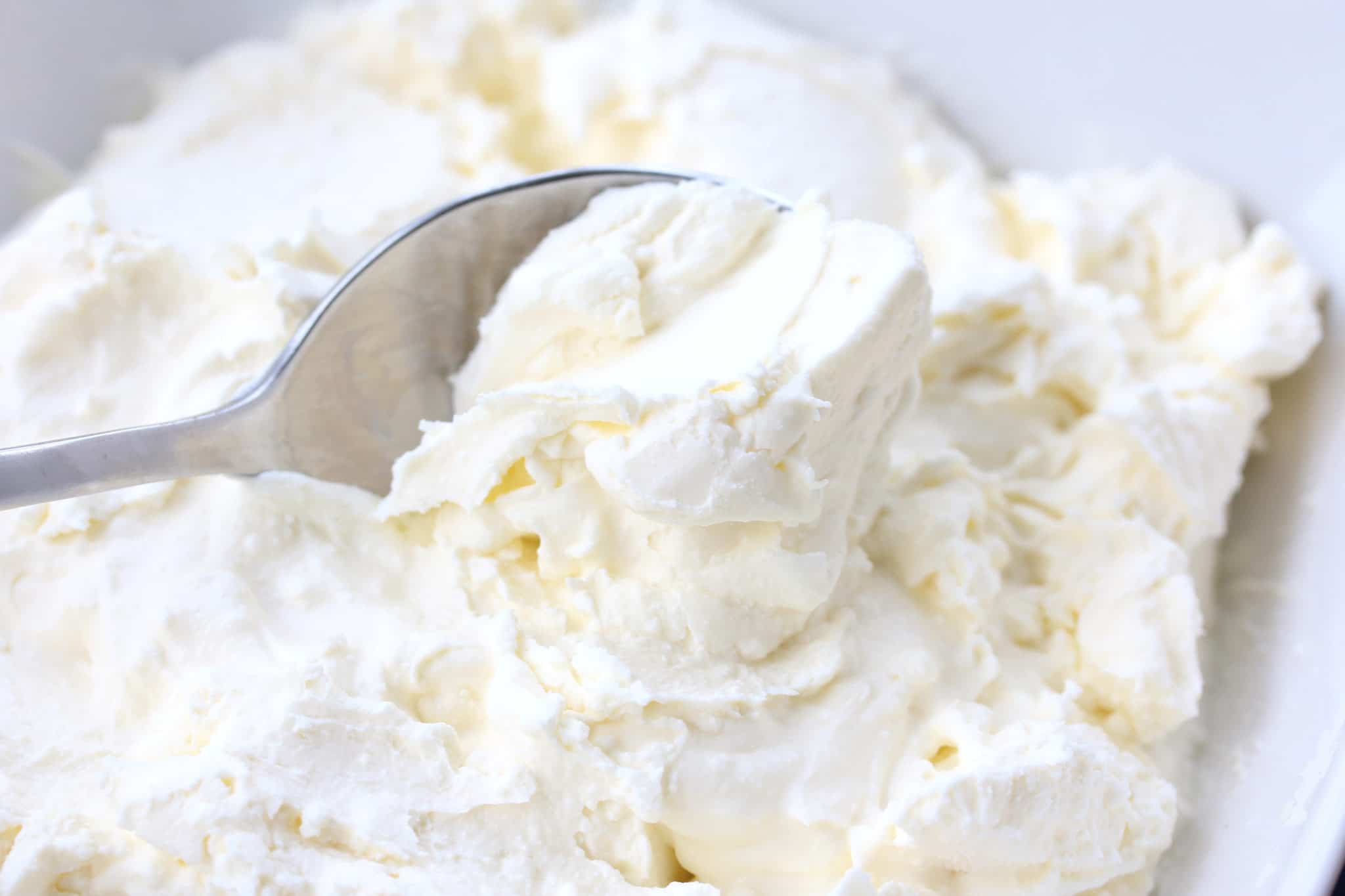
Ingredients and Equipment
- Heavy Cream (regular or “whipping” heavy cream; fresh/non-pasteurized yields the best results if you can source it)
- Milk (fresh/non-pasteurized yields the best results if you can source it)
- Tartaric Acid
- Calcium Chloride (if using pasteurized cream/milk)
- Thermometer
- Cheesecloth
Tartaric Acid
Traditionally made by adding an acidic substance to thicken the cream (known as “denaturation”). While you can use lemon juice, vinegar or citric acid, tartaric is the traditional method and I’ve found that it’s the most consistent, foolproof, and yields the best results for a really nice, thick texture. You can find tartaric acid in any wine or cheesemaking shop or online. I purchase my food-grade tartaric acid here on Amazon.
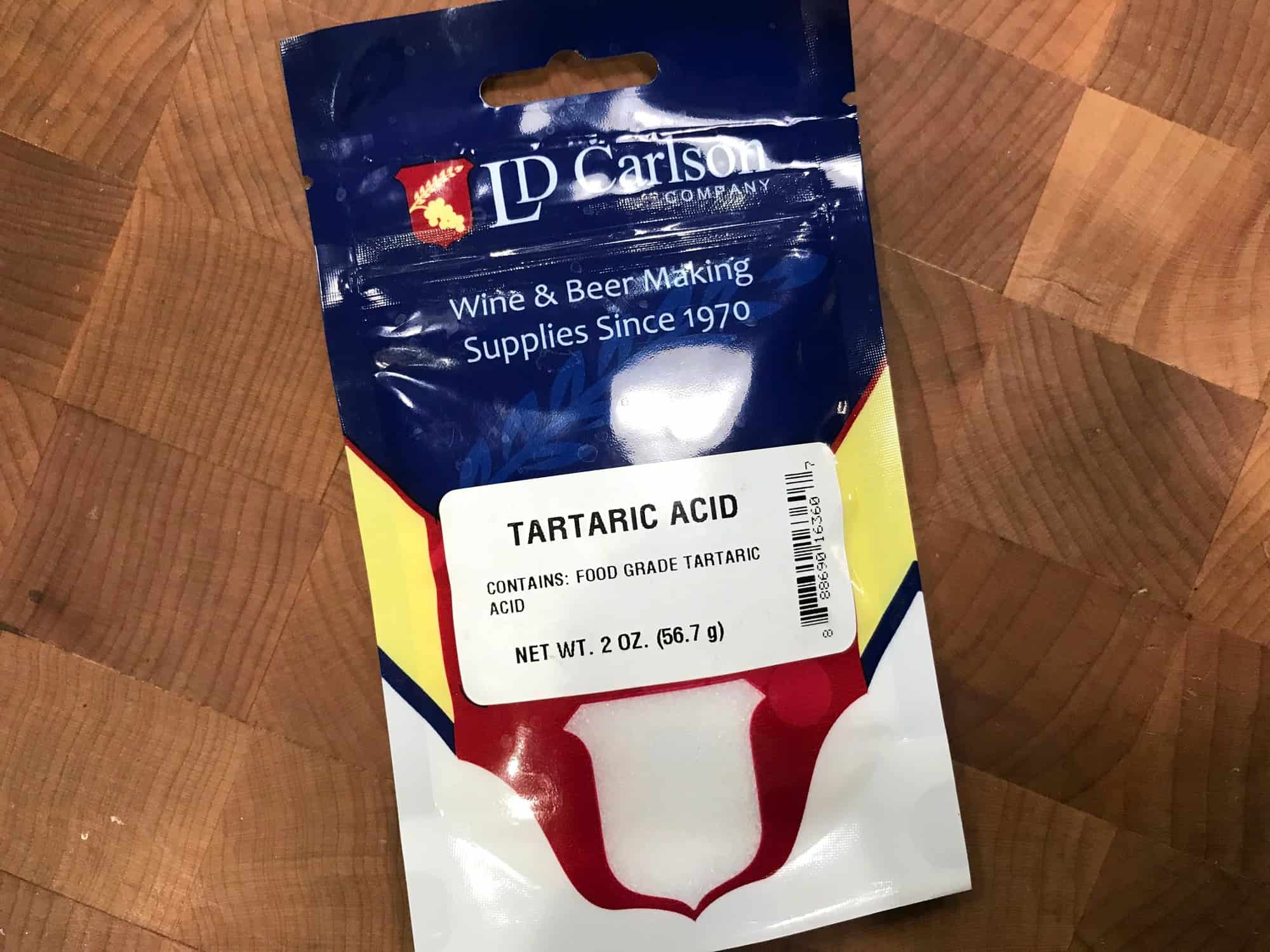
Calcium Chloride
Unless you’re using fresh cream and milk straight from the cow you will need calcium chloride. This is a necessary ingredient when using pasteurized milk and cream, it is what helps the milk/cream coagulate and thicken.
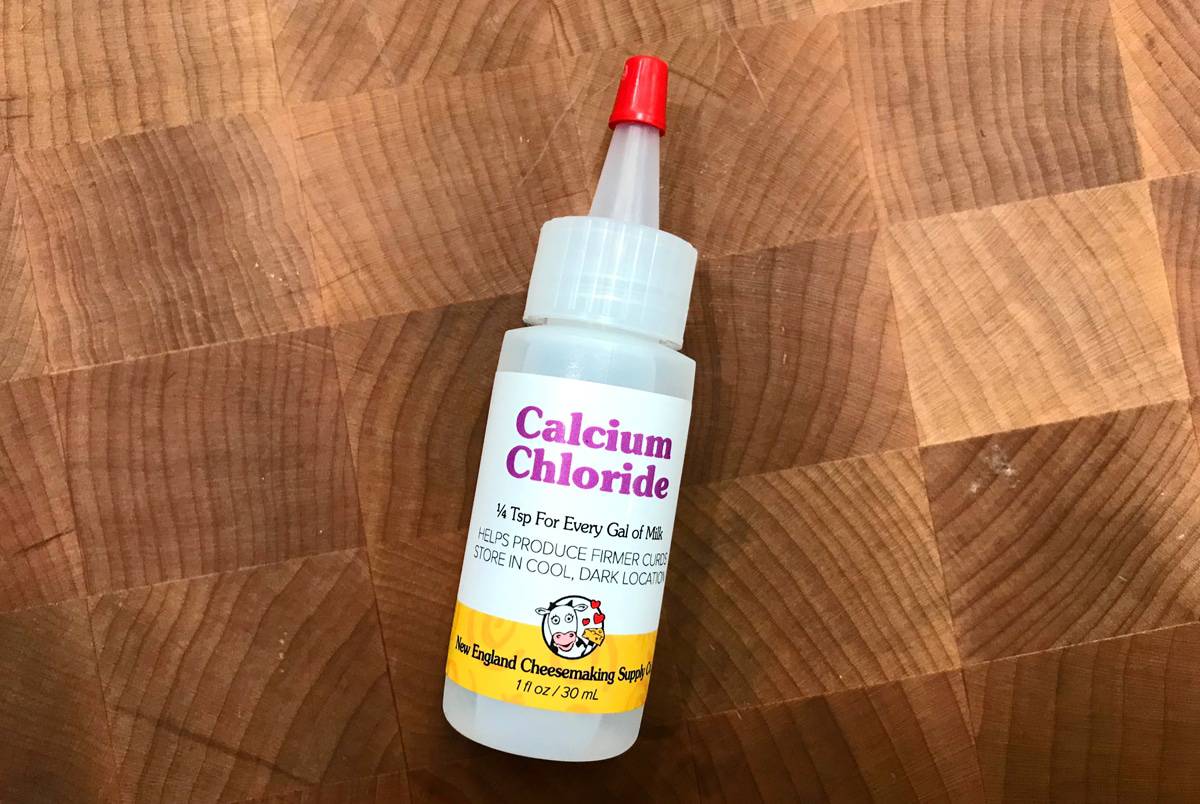
Thermometer
You will need a thermometer to check the temperature of your cream. You can use a dairy thermometer or a regular digital thermometer. I use an instant read thermometer which I also use regularly for cooking and baking bread. For an inexpensive option I have used this instant read thermometer in the past. Since then I’ve upgraded to this Thermapen which I absolutely love and highly recommend.
Cheesecloth
This is what you will use to drain your thickened cream. I use and recommend this cheesecloth because it’s 100% unbleached cotton, is high grade, is very durable for multiple uses, and you get a ton of it. Overall it’s the best value I have found for the quality.
Troubleshooting: Why Won’t My Mascarpone Thicken?
The most common reasons for the mascarpone not setting properly are:
- Added ingredients/additives: These interfere with the ability of cream to thicken properly. Common additives include gellan gum and carrageenan. Make sure the brand of heavy cream you’re using has only one ingredient: cream. They’re hard to find but they’re out there (one example is the Clover brand available in places like Whole Foods).
- The calcium chloride wasn’t even distributed throughout the heavy cream. Stir it well.
- The cream wasn’t heated to 190 F. Be patient and don’t rush it. And make sure you’re thermometer is accurately calibrated. Once it reaches 190 F hold it steady for a full 5 minutes.
- Once you add the tartaric acid simmer it for a minute and be sure to stir it constantly.
- It wasn’t drained long enough. Again, be patient. Figure on at least 4 hours but it may take significantly longer.
Follow the recipe carefully as written and you’ll be successful. With your equipment and ingredients in hand, are you ready to make some perfect homemade mascarpone cheese?
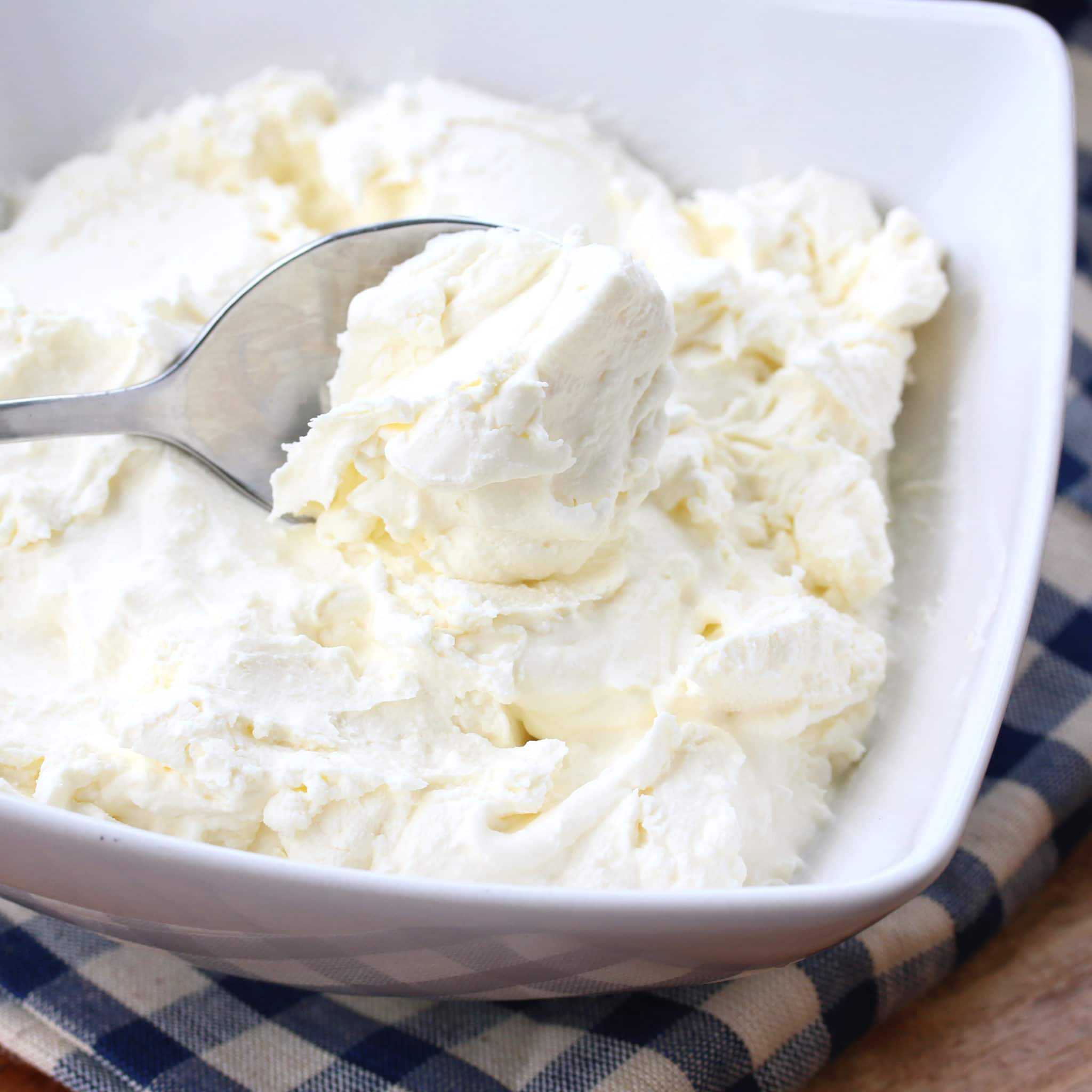
How To Make Mascarpone
Let’s get started!
Pour the heavy cream and milk into a small saucepan. Thoroughly stir in the calcium chloride mixture making sure it is fully distributed throughout the cream. Gently heat the cream over medium heat until it reaches 185-190 F, stirring constantly to prevent scorching. Use a dairy thermometer or an instant read thermometer.
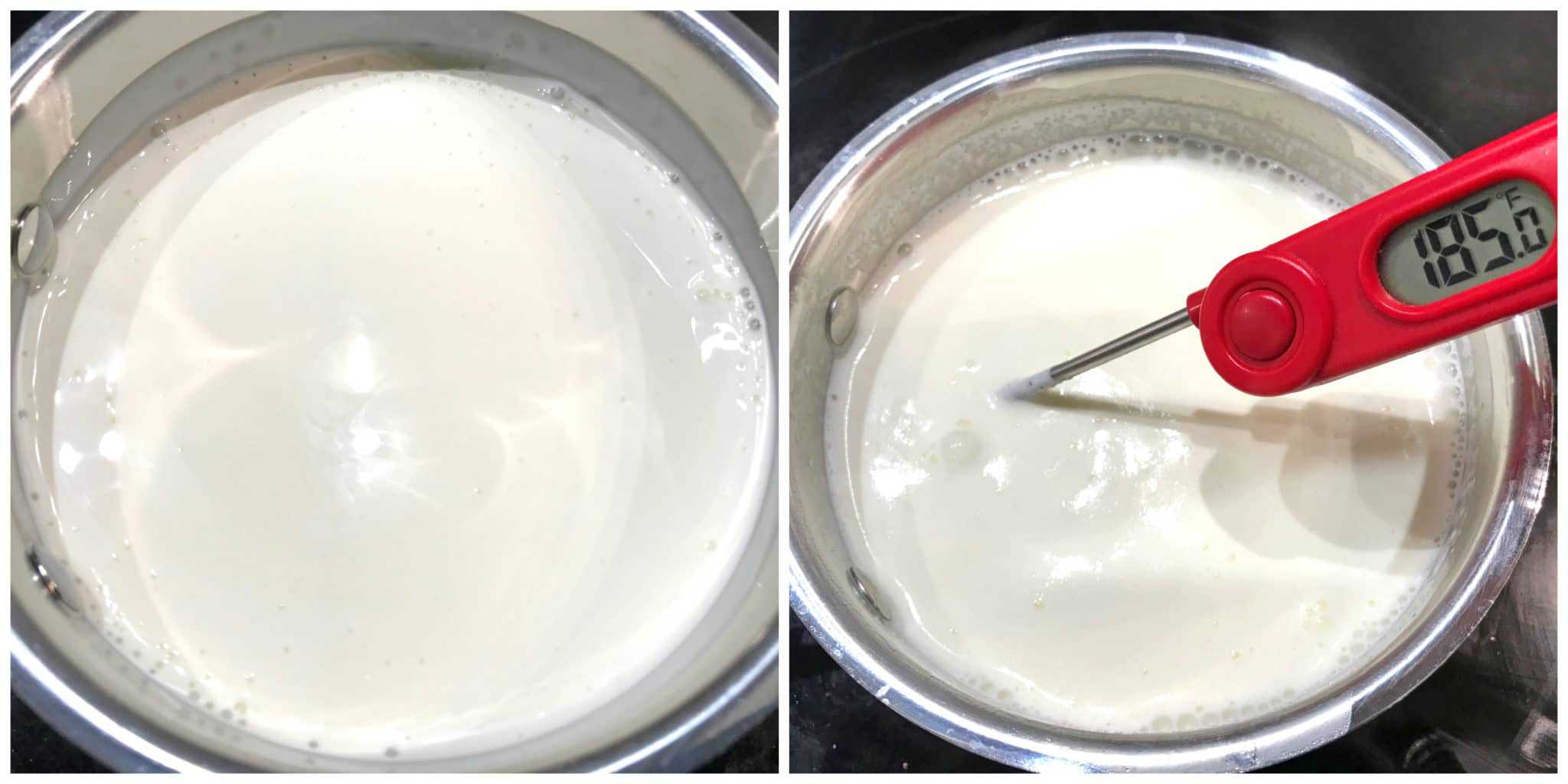
Once the cream reaches 185-190 F adjust the temperature so that the cream remains at 185-195 F and hold it at that steady temperature for 5 minutes.
During the 5 minutes dilute the tartaric acid in 2 tablespoons of water. Stir in the tartaric acid mixture, stirring constantly for about a minute. The cream will curdle and take on a consistency of thin cream of wheat. Let it cool for 5 minutes.
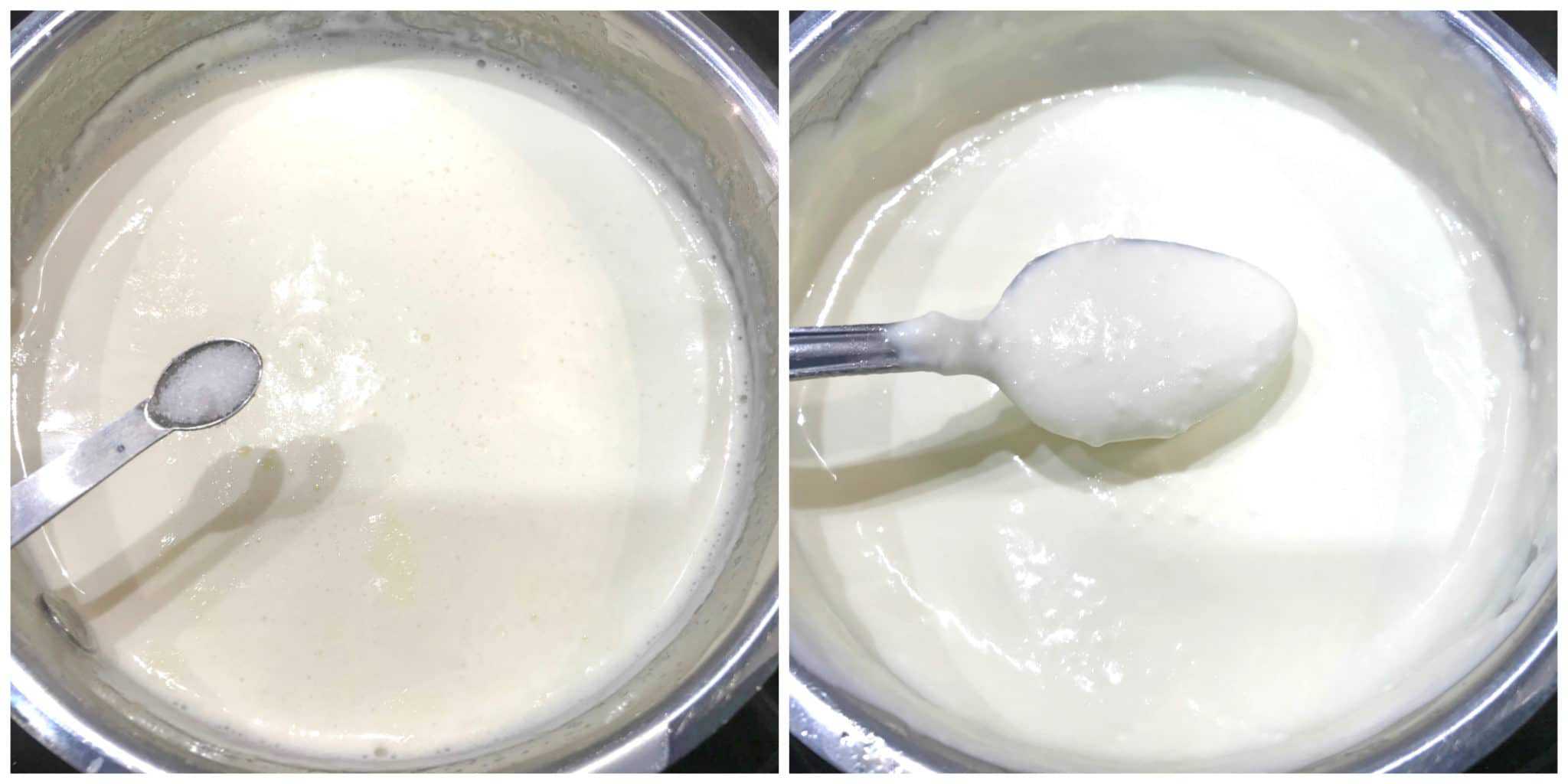
Pour the thickened cream into a colander that’s lined with cheesecloth. Cover it to prevent anything from falling in it and place it in the fridge or in a cool place to let it drain for about 4 hours (or longer) until the desired consistency is reached.
Transfer the mascarpone to a bowl. Cover and keep refrigerated. It will keep for 3-5 days. (See also section above about freezing mascarpone.)
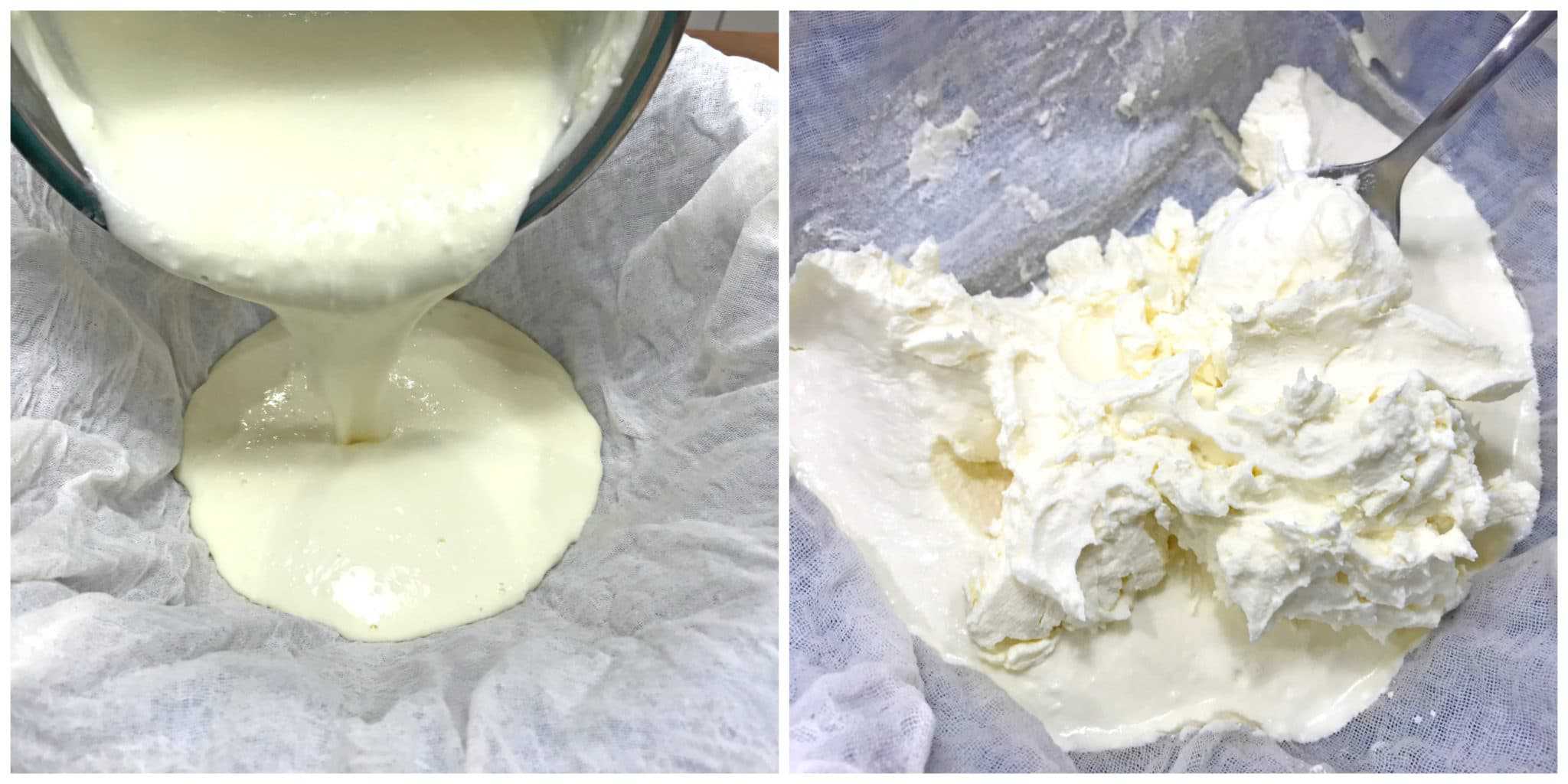
Enjoy!
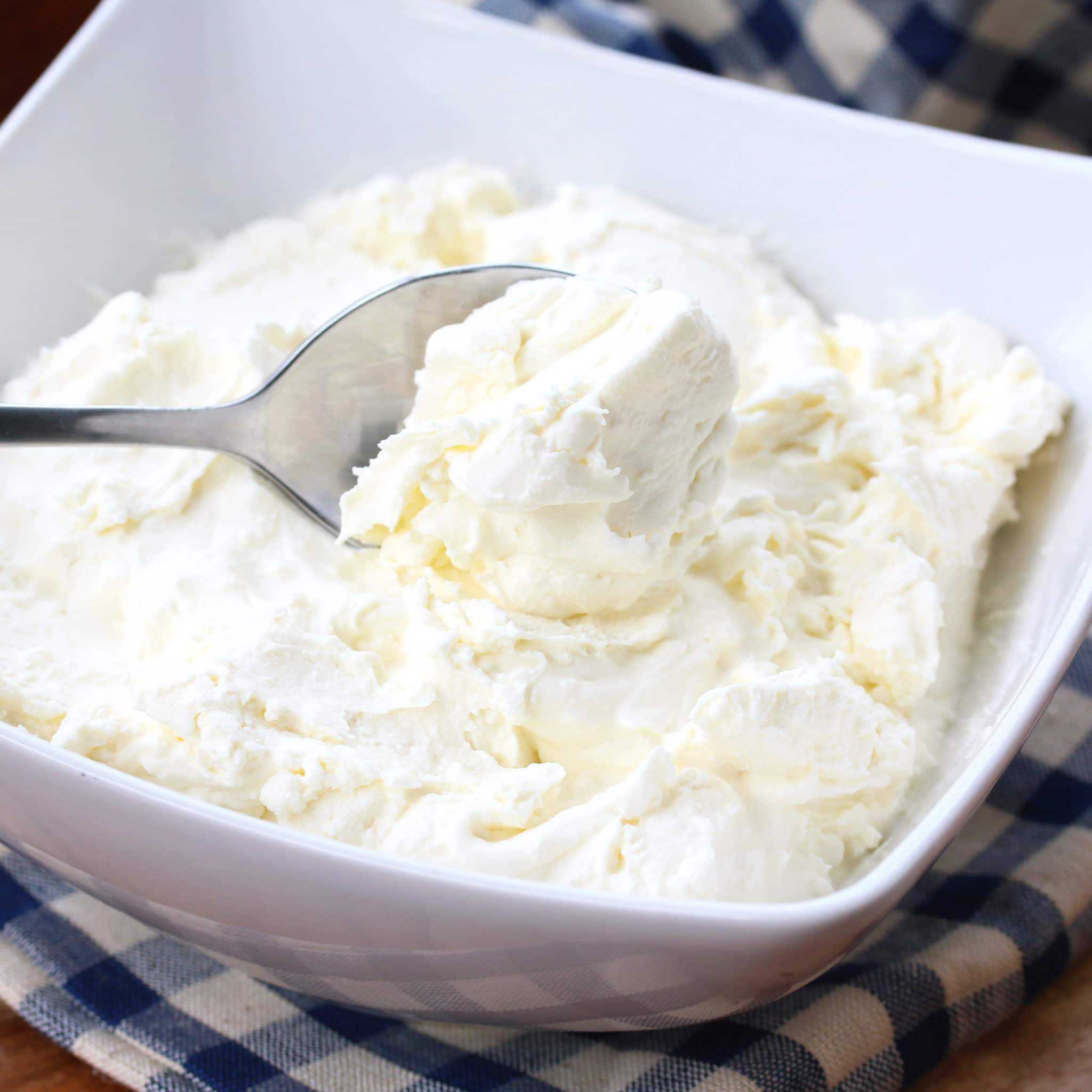
For more DIY cheesemaking recipes check out my tutorials on:
Save This Recipe
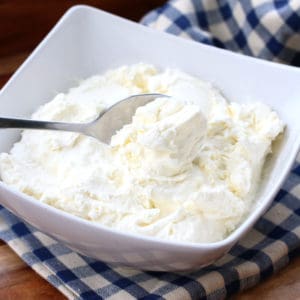
How to Make Mascarpone
Equipment
- Instant read thermometer (I love my Thermapen!)
Ingredients
- 1 cup heavy cream with NO added ingredients, just cream (fresh/non-pasteurized yields the best results if you can source it; ultra-pasteurized is fine but regular pasteurized is better)
- 1 cup whole milk (fresh/non-pasteurized yields the best results if you can source it)
- 1/16 teaspoon calcium chloride , mixed in 2 tablespoons water before adding it to the cream (not needed if using fresh/raw milk and cream)
- 1/8 teaspoon tartaric acid , mixed in 2 tablespoons water before adding it to the cream
Instructions
- Pour the heavy cream and milk into a small saucepan. Thoroughly stir in the calcium chloride mixture making sure it is fully distributed throughout the cream. Gently heat the cream over medium heat until it reaches 190 F, stirring constantly to prevent scorching. Use a dairy thermometer or an instant read thermometer.Once the cream reaches 190 F adjust the temperature so that the cream remains at 185-195 F and hold it at that steady temperature for 5 minutes.During the 5 minutes dilute the tartaric acid in 2 tablespoons of water. Stir in the tartaric acid mixture, stirring constantly for about a minute. The cream will curdle and take on a consistency of thin cream of wheat. Let it cool for 5 minutes.Pour the thickened cream into a colander that's lined with cheesecloth. Cover it to prevent anything from falling in it and place it in the fridge or in a cool place to let it drain for about 4 hours (or longer) until the desired consistency is reached. Transfer the mascarpone to a bowl. Cover and keep refrigerated. It will keep for 3-5 days. (See also section above about freezing mascarpone.) Makes about 2 cups of mascarpone cheese.Note: This recipe can be doubled.
Nutrition
First published on The Daring Gourmet February 13, 2020
Adapted from New England Cheesemaking

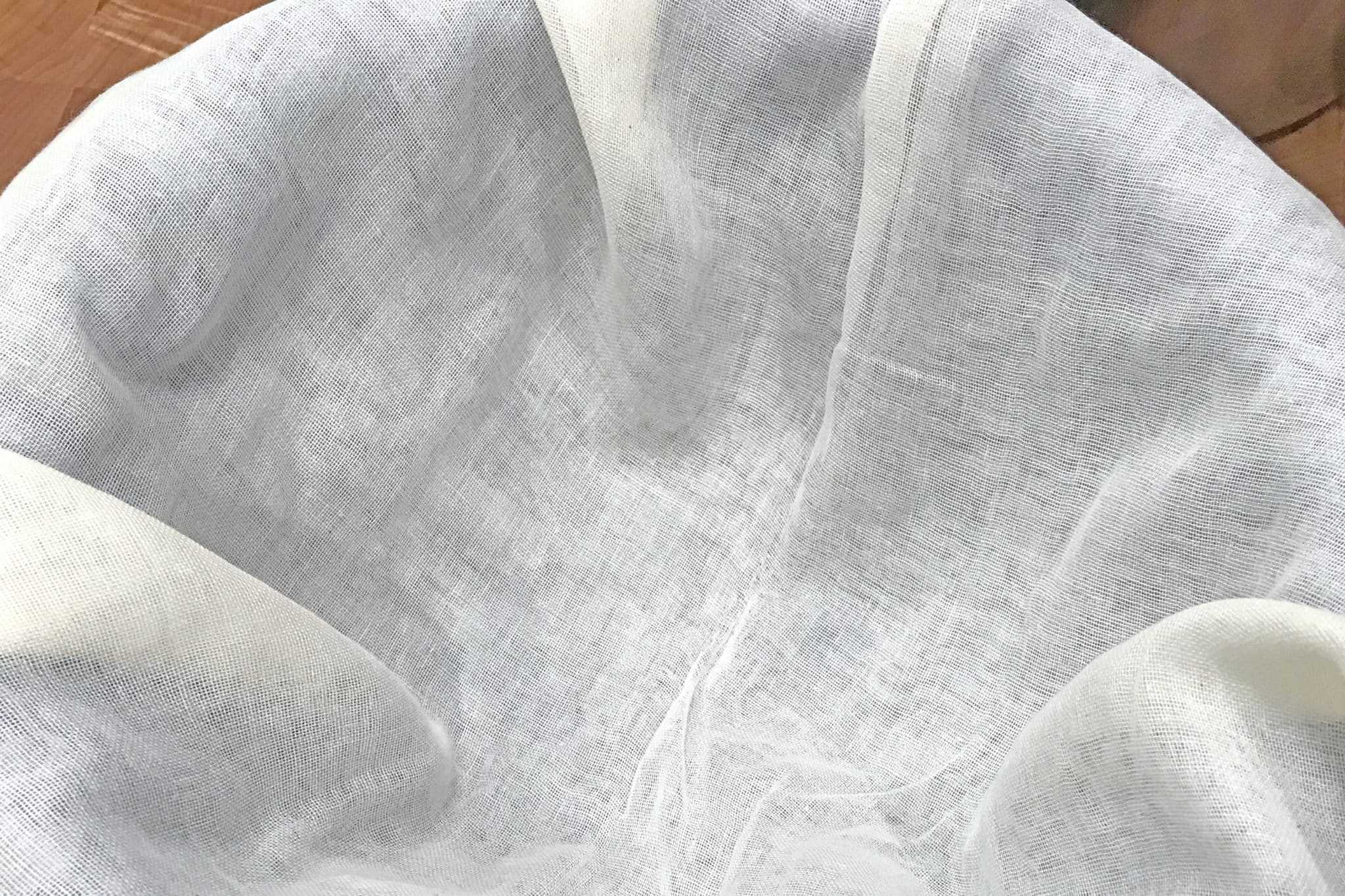


















Hello, Kimberly! Thank you very much for the recipe. I had high hopes for it, but unfortunately, the milk did not thicken at all. I used Sarah Farms heavy whipping cream with Mill-King Low-Temp Pasteurized Non-Homogenized Whole Milk. Made my measurements precisely, using a precision scale and a precision thermometer. I used the LD Carlson brand for calcium chloride and tartaric acid. What, do you think, might have gone wrong? You think I can save what I have by reheating it and adding lemon juice to it?
If I want to use Mascarpone to make Chocolate Truffles, would you heat it first as you would double cream and then pour the warmed chocolate over it, or not heat the cream at all?
I can’t wait to make this but I have a few questions first.
Where I live heavy cream is difficult to find. We easily have 33% whipping cream.
Can I use 2 cups of that instead of 1 cup of heavy cream and 1 cup of whole milk?
Or would 1-1/2cups whipping cream and 1/2 cup of milk be better?
Would all whipping cream make for a thicker end product?
I also found it very simple to purchase both the tartaric acid and calcium chloride at my local winemaking business.
Thanks so much, Kimberly :)
Hi Leslie, yes you can use whipping cream, that’s no problem at all. Happy cooking and let us know how it goes!
Can I use the 0% skim milk? does the % matter?
Hi Lily, fat % is critical in mascarpone so in addition to the heavy cream you will want to use whole milk.
Thanks for the fast reply. Because of I typically do not drink whole milk, will this work if i freeze the rest and re-se next time? Have you tried with thawed frozen milk before?
Hi Lily, I haven’t tried that so I’m honestly am not sure if/how that would affect the outcome.
I can’t thank you enough for this recipe!! I needed a lot of marscapone for a very large Chantilly Berry cake for my mom’s 80th birthday. Buying it would have broken the bank and made her favorite cake crazy expensive. With your recipe I made 52 ounces for about $10. Fortunately, i have access to a really good milk here, the kind that let’s the cream rise to the top. It worked out beautifully. It is so delicious! I just got the cheese made and in the fridge. Yummy!!!
That’s wonderful, Gail, I’m so happy it was a success, thank you! And you absolutely cannot beat that price for mascarpone! :)
Hi, thank you for the recipe. I’ve made it yesterday following all the instructions, but the cheese didn’t drain. Do you know what could have gone wrong? Thanks for your help!
Hi Natalie, it didn’t drain meaning it was too thick? No liquid would drain out of it?
hey, thank you for the recipe. my mascarpone appeared to have turned out fine but when i tried it, it was very chalky. any idea why? thank you for your help :)
Hi Moritz, that can commonly happen when the milk/cream is heated too quickly. Try heating it slowly to avoid that problem.
Problem making “FOOLPROOF” Mascarpone, I clicked on the images of CHEESE CLOTH, CALCIUM CHLORIDE, and TARTARIC ACID, which took me to Amazon for the items suggested, I ordered them, they arrived and I bought a pint of HEAVY CREAM. I then followed the recipe directions to the letter. IT IS NOT FOOLPROOF. It did not thicken as directions indicate it should have. The mixture just ran through the cheesecloth. That was this morning. My major mistake was waiting until today to try theto make Tiramisu with it. Now I have to do a chocolate cake for backup. Someone else had this problem earlier, so I was very diligent in following your recipe. I will go back and read the response to see if there were any helpful notes. Any suggestions on what went wrong with my attempt?